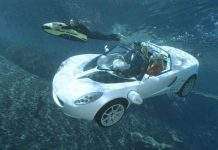Black holes, the ultimate cosmic mysteries, exert an irresistible pull, even as they represent the darkest objects in the universe. These gravitational anchors of galaxies, crucial to star formation, have captivated scientists and the public alike. Jonas Enander’s new book, Facing Infinity: Black Holes and Our Place on Earth, takes readers on a journey to unravel the history, science, and mystique of these extraordinary cosmic entities, offering a tangible human context to an otherwise baffling subject. A powerful excerpt from the book imagines the terrifying reality of a human falling into a black hole, a thought experiment that highlights the profound implications of these celestial giants.
The Descent: A Fateful Encounter
The excerpt plunges us directly into the experience of an astronaut falling into the maw of a black hole, bypassing the exposition and instantly immersing the reader in the terrifying unknown. The initial description vividly portrays the disorientation of space: a feeling of weightlessness, the protective enclosure of the spacesuit, and the sudden appearance of an overwhelming darkness unlike anything encountered before.
Beyond the Darkness: Gravity’s Unrelenting Grip
The excerpt clearly explains the basic science behind black holes—how their immense gravity prevents even light from escaping, making them appear as voids in the starfield. The narrative reinforces this scientific explanation by highlighting the gradual and inescapable pull toward the black hole, emphasizing the astronaut’s utter lack of control. This feeling of helplessness is compounded by the understanding that there is no return—the gravitational pull is absolute.
Time, Space, and Sensory Deprivation
The unique environment of space adds another layer of horror to the scenario. Unlike falling on Earth, there is no air resistance, no sound, only the unsettling sensation of the spacesuit and the increasingly rapid heartbeat, a primal response to the encroaching dread. This sensory deprivation, coupled with the visual distortions of the stars, adds to the protagonist’s growing sense of disorientation.
Spaghettification: A Gruesome Reality
As the astronaut nears the black hole, the excerpt delves into the physics of “spaghettification,” a consequence of the intense gravity. The narrative clarifies that this process involves the body being stretched and elongated due to the uneven gravitational pull – the feet experiencing a stronger force than the head. The author explains this horrifying process in relatively accessible terms, emphasizing that while intensely destructive, it would happen quickly with minimal sensation. The key takeaway is the complete dissolution of the body, leaving nothing behind.
Visual Distortions and the Event Horizon
The experience is further complicated by visual anomalies as the astronaut crosses the event horizon. The stars’ light is warped, appearing as multiple copies and concentrated into a thin ring, a consequence of the black hole’s immense gravity bending spacetime. The absence of any physical sign marking the point of no return underscores the abruptness and finality of the event.
The Singularity: A Limit to Knowledge
The excerpt concludes with a description of the singularity—the infinitely dense point at the center of the black hole where matter and light are compressed beyond comprehension. Space and time cease to exist, representing an ultimate boundary to our understanding of the universe. The final image—the utter disintegration of the astronaut and the triumph of the darkness—serves as a stark reminder of the power of black holes and the limits of human exploration.
The thought experiment vividly demonstrates the profound and terrifying consequences of encountering a black hole, illustrating the intersection of astrophysics and the fragility of human existence. It is a compelling example of how science can illuminate both the wonders and the dangers of our universe.






































































